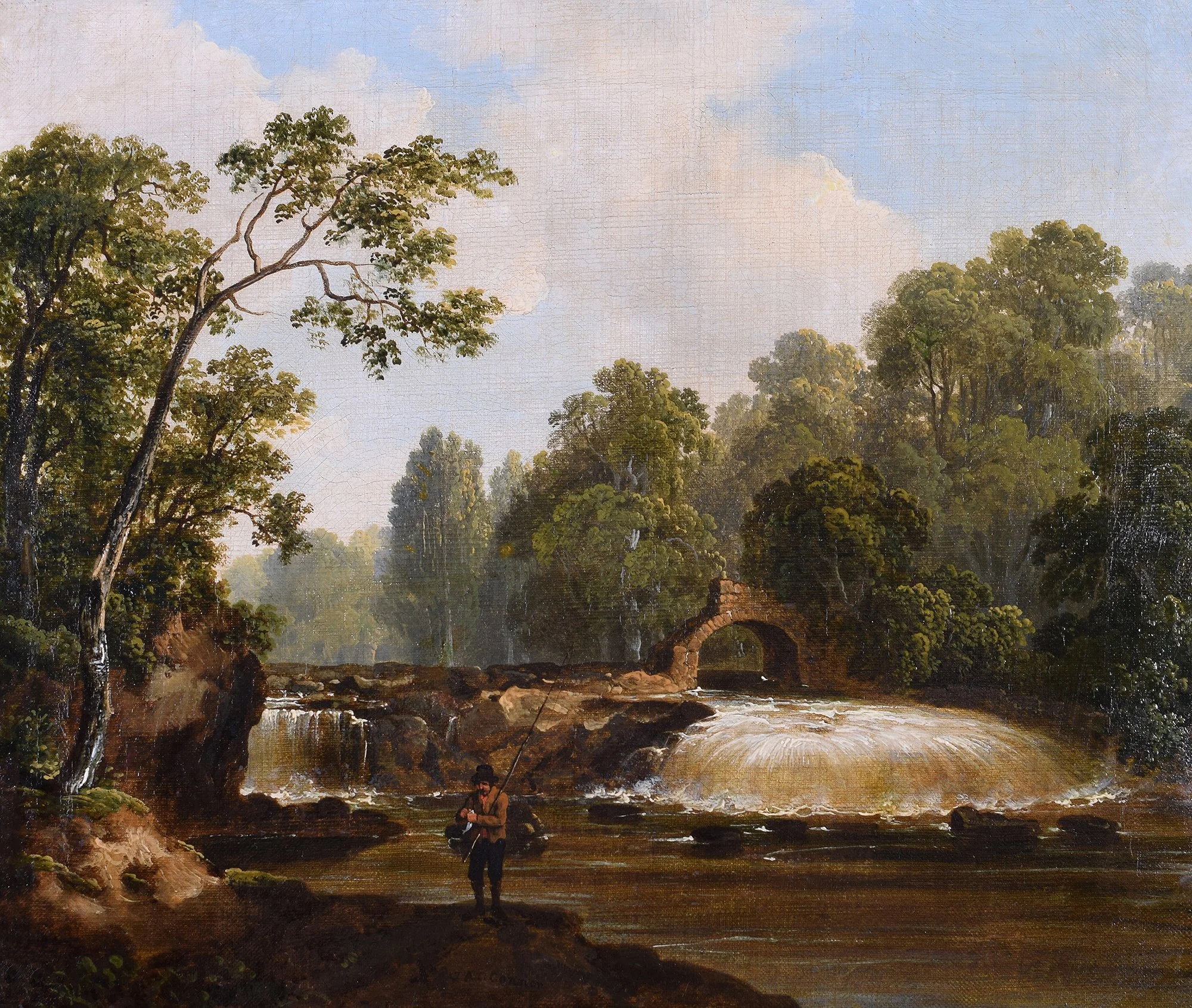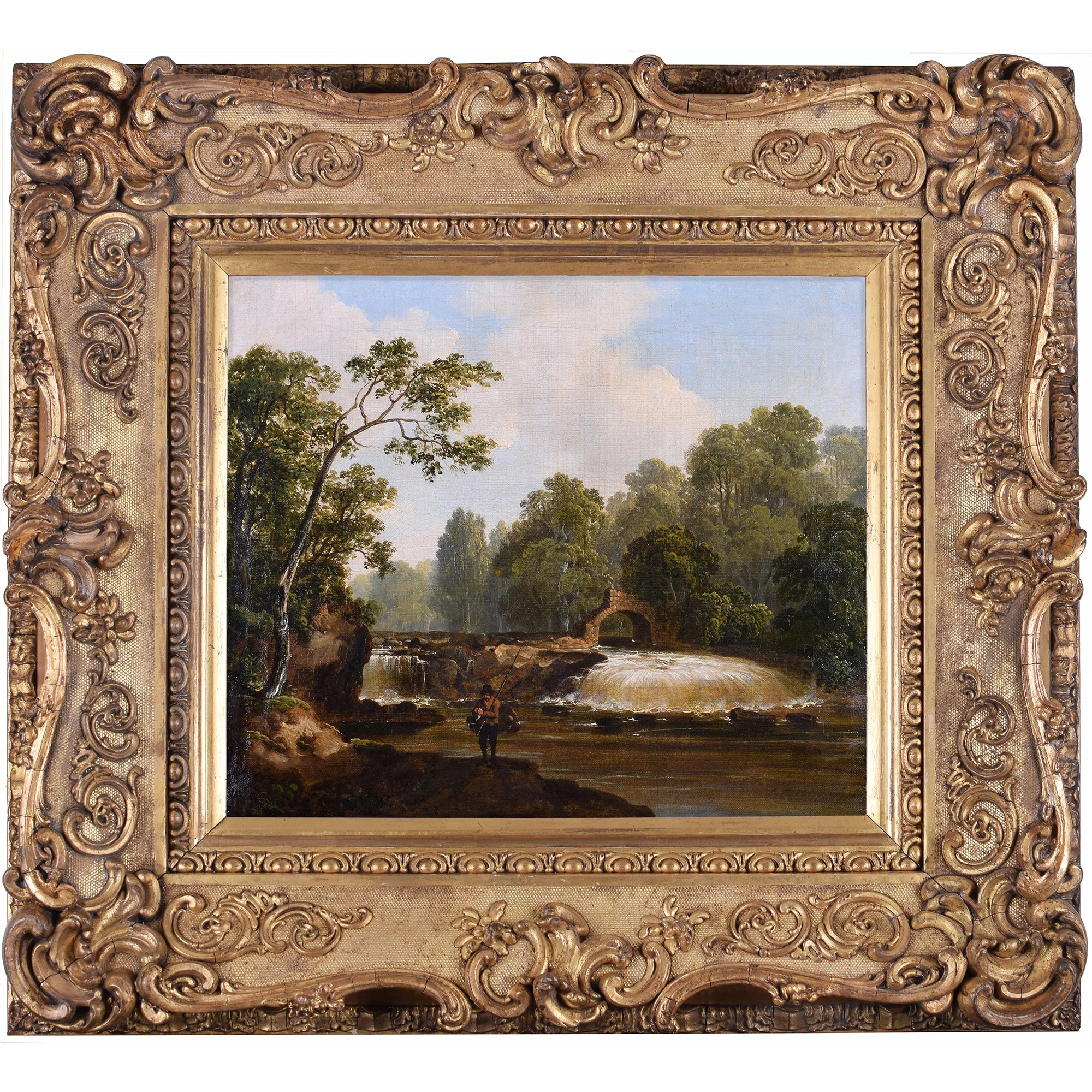James Arthur O’Connor c.1792-1841
SOLD
The Salmon Leap, Leixlip
Oil on unlined canvas, on original strainer, 31 x 35.5 cm.
Signed; inscribed on label, verso
Exhibited: probably, Exhibition of the Artists of Ireland at the Dublin Society’s House, 1819, number 46 (‘View of the Salmon Leap, Leixlip’)
Leixlip was settled by the Vikings, ten miles west of Dublin on the River Liffey. They called it Lax Hlaup meaning ‘salmon leap’ - lax is the Danish word for salmon to this day. Leixlip translates into Irish as ‘Leim an Bhradain’, or ‘Leap of the salmon’. The Normans built a castle here which stands on a rock at the confluence of the Rye Water and the Liffey. The salmon leap was a quarter of a mile upstream from the castle, although artists painting it sometimes cheated and put it below the castle walls to add interest to the scene. The leap was a wonderful sight. The salmon would spring clear out of the water many feet in the air as they jumped from pool to pool up the liquid staircase on their way to spawn. The salmon leap at Leixlip was renowned as one of the wonders of Ireland. It was a favourite with landscape painters and no series of engraved Irish Views was complete without The Salmon Leap at Leixlip, usually dedicated to the then occupant of the castle.
There was an arch on the northern bank which is said to have been all that was left of an old bridge, swept away when the river was in spate and replaced in 1736 by the existing bridge and toll house to the east of the town.
The salmon leap was submerged by an electric dam in 1947 and the archway was dynamited. The fish have an electric lift to take them upstream and are counted electronically. They often find it difficult to get down the lift so that they become emaciated and die. Now that there are Ministers both for the Environment and for Tourism it is unlikely that such an unnatural interference with nature would be tolerated today.
Unfortunately the leap will, however, probably never be restored to the salmon because, although the electricity generated in the dam is negligible, the lake created by it is now an essential part of Dublin's water supply.
The late Desmond Guinnness, 1992
(see Gorry Gallery Catalogue, 29 May - 11 June 1992, 7)

